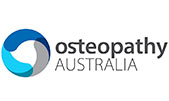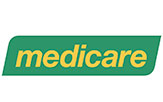What is PCO and PCOS?
Polycystic ovaries (PCO) are commonly mistaken for polycystic ovary syndrome (PCOS). If you have PCO, you do not necessarily have PCOS. A polycystic-pattern may be an incidental finding during a pelvic scan for some other reason. If you have polycystic ovaries on scan but regular periods and no symptoms, then you are normal.
It is important to note that the fluid filled structures in the ovaries associated with PCO are not technically cysts. Ovaries contain follicles where the ova/eggs develop and they are naturally filled with fluid. Normally only two to five follicles develop at the one time and they are scattered throughout the ovary.
PCO is characterised by a greater number of follicles developing at the same time, usually more than twelve arranged into a circle – “pearl-necklace appearance”. Polycystic ovaries are larger and have a slightly different appearance to normal ovaries.
Polycystic ovary syndrome is a combination of PCO and a series of symptoms, typically:
- Excess body hair
- Acne and other skin problems
- Scalp hair loss
- Irregular or missing periods
- Heavy periods
- Fertility problems
- Insulin resistance
- Weight issues
PCOS is a hormone condition and does not cause pain in the pelvic area. If you do experience pelvic pain and have some of the symptoms mentioned, then you may have PCO and another condition causing the pain (e.g. endometriosis, muscle pain). PCOS does not usually need to be treated surgically.
How do you diagnose PCOS?
PCOS is diagnosed only when two of the following three symptoms are present and other causes are excluded:
- Irregular periods (usually fewer than six periods per year)
- Blood tests or symptoms suggesting male hormone excess
- Polycystic ovaries visible on ultrasound
You do not need to have an ultrasound if you have criteria 1 and 2. In women younger than 20 years, ultrasounds are not recommended. This means that irregular periods and hyperandrogenism need to be present for a diagnosis of PCOS to be made.
WHRIA has a Diagnostic & Specialist Ultrasound Clinic with an experienced sonographer, you can ask your GP for referral.
Polycystic ovaries visible on an ultrasound, means that:
- more than 20 follicles (partly developed eggs) are visible on one or both ovaries or
- the size of one or both ovaries is increased (more than 10ml).
A number of other conditions that could cause similar symptoms of irregular periods or no periods need to be checked by your doctor and ruled out before a correct diagnosis of PCOS can be confirmed.
How do you treat PCOS?
Lifestyle factors such as diet (low GI-glycaemic index, reduced carbohydrate) and exercise have a significant impact on PCOS and this is the key to controlling symptoms. For example, insulin resistance and being overweight can affect PCOS and worsen symptoms.
The drug metformin is very useful to help manage sugar cravings. If you have irregularities in your menstrual cycle associated with PCOS it can also help to correct these. Symptoms such as excess body hair can be treated with anti-androgens (male hormone blockers) such as spironolactone, and these can be used alone or combined with a contraceptive pill.
If you have a specific enquiry for our WHRIA specialists
Click HereFact or fiction? 17 PCOS myths… busted
- Myth: Not many women have polycystic ovaries.
Fact: About one in four women of reproductive age have PCO. - Myth: Polycystic ovaries are full of cysts.
Fact: The term PCO refers to a pattern of twelve or more small follicles arranged around the periphery of the ovary in a pearl necklace like pattern. They are not technically cysts, and do not need to be removed surgically. - Myth: Women with polycystic ovaries have cysts that need to be removed surgically.
Fact: The so-called ‘cysts’ are actually small follicles, each containing an egg. There is no need for surgery to remove the follicles from an ovary: they are a normal part of an ovulating ovary. - Myth: All women with PCO have PCOS.
Fact: PCOS is diagnosed only when two of the following three symptoms are present and other causes are excluded:- Irregular periods (usually fewer than six periods per year)
- Blood tests or symptoms suggesting male hormone excess
- Polycystic ovaries
- Myth: Women do not have any male hormones, women only make female hormones.
Fact: Producing enough testosterone is an essential part of being female. Women must be able to make testosterone, a male hormone, as without it they could not produce oestrogen. - Myth: Polycystic ovaries are painful.
Fact: Polycystic ovaries do not cause pain. You may have other reasons for your pelvic pain. Pain in the ovary could be from ovulation or from a cyst, which should usually clear up in time. Large cysts can cause a lot of pain, however this is not related to PCO. - Myth: Scalp hair loss is usually due to PCOS.
Fact: Scalp hair loss may be due to an iron or zinc deficiency, and this possibility needs to be eliminated before PCOS is treated. It may also be a sign of an underactive thyroid, malnutrition, sickness or stress. - Myth: Some women with hirsutism (excess body hair) think that they are turning into a man.
Fact: You can’t be female without making female hormone, and you need to produce testosterone to produce oestrogen. - Myth: There are no really effective treatments for severe acne.
Fact: Hormonal therapies, such as cyproterone acetate, are effective irrespective of whether or not there is an identifiable hormonal problem such as PCO. Isotretinoin is also useful. - Myth: The contraceptive Pill causes excess body and facial hair.
Fact: The Pill is a good treatment for hirsutism as it suppresses the ovaries, lowering testosterone levels. - Myth: Amongst those with PCOS, only women with a higher than average weight will suffer from menstrual irregularities.
Fact: Thin women can also suffer PCOS-caused menstrual irregularities; however the number of these women is much smaller – only 5 to 10%. - Myth: All women with menstrual irregularities have PCOS.
Fact: Many conditions can cause menstrual irregularities, so if you are suffering from this condition you should have blood tests to exclude other causes before treating PCOS. - Myth: All women who suffer from excess hair and irregular periods have PCOS.
Fact: Adult-type 21-hydroxylase deficiency also presents with these symptoms, so it can be wrongly diagnosed as PCOS - Myth: The contraceptive pill causes infertility.
Fact: The Pill is a safe way to prevent pregnancy and its effects are reversible for women during their reproductive years. - Myth: The Glycaemic Index (GI) is the only factor influencing the way food affects blood glucose and insulin levels.
Fact: Some foods will lower the GI of the entire meal. These foods include acids in foods, (e.g. fruit acids and vinegar), fat, fibre and high protein foods. - Myth: High GI foods are those that rate close to 100.
Fact: The GI of glucose is 100. A GI of 70 or more is said to be high. A low GI result is said to be 55 or less (40 or less is better). - Myth: Women with PCOS have less bone strength.
Fact: Women with PCOS have normal bone strength.
Fertility Treatments
Some women with PCOS will ovulate infrequently and so may take a long time to conceive without help. Many start ovulating again with low GI, reduced carbohydrate diets and exercise. Some women need medical help to conceive. An Australian review was published in December 2019 (reference below) outlining the latest medical treatments:
- Exercise and diet changes including weight loss (if over-weight) should be introduced first.
- Letrozole, clomiphene (two “anti-oestrogens”) and metformin have all been shown to improve ovulation and pregnancy rates.
- Letrozole is the best drug
- Clomiphene is the second best drug
- Metformin is the third best drug
- Metformin and Clomiphene together is better than either drug used alone (but letrozole is better)
- Injections of FSH (Follicular Stimulating Hormone) is considered next
- Laparoscopic ovarian surgery may be considered in women who fail to conceive after trying the above treatments
- IVF could be considered as the next option
Reference Costello MF and colleagues. A brief update on the evidence supporting the treatment of infertility in PCOS. Aust NZ J Obstet Gynaecol 2019; 59:867-873
Support for PCOS
Jean Hailes, Australia has many resources for PCOS including emotional health.
PCOS Awareness Association is a world-wide support group in the USA for women with Polycystic Ovary Syndrome (PCOS), and their families.
The UK has a large network with many on-line connections at Verity – Sharing the truth about PCOS
If you have a specific enquiry for our WHRIA specialists
Click Here









